Recent Articles
Popular Makes
Body Types
2018 Kia Optima vs. 2018 Ford Fusion: Which is Best?
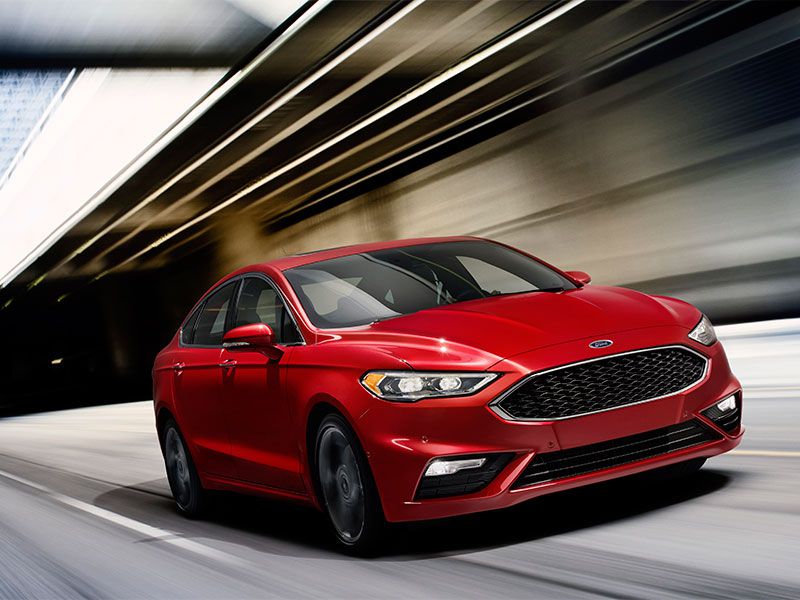
2017 Ford Fusion Sport ・ Photo by Ford
With all the sales and attention that SUVs and crossovers get these days, there are some that say the midsize sedan class has lost its way. While four-door family cars might not command the attention they once did, this year’s crop of competitors is the most impressive ever. The 2018 Kia Optima and 2018 Ford Fusion are trend fighters at the top of that list, with style and safety at the forefront, sleek lines, comfortable cabins, and a full gamut of technology. In the following pages, we’ll pit the Optima against the Fusion over a wide range of criteria to determine which is best. Both cars have conventional, hybrid, and plug-in hybrid variants, but we’ll focus mainly on the better-selling non-hybrid models in this comparison.
Exterior Styling and Trim Levels
Both the 2018 Kia Optima and 2018 Ford Fusion have stylish and distinctive exteriors. The Optima received an update in 2016 and features an exterior design that’s clean and unfettered. If you think it looks a bit European and Audi-esque, you’re spot on, as Kia’s design leader is none other than Peter Schreyer, formerly of Audi. The Fusion benefits from a 2017 design refresh, with changes to the front and rear fascia. Many say that the Fusion’s sleek exterior pays homage to Aston Martin.
Exterior Style is the most subjective of all categories, but Ford goes where Kia doesn’t with the performance-oriented Fusion Sport.
Ford Fusion
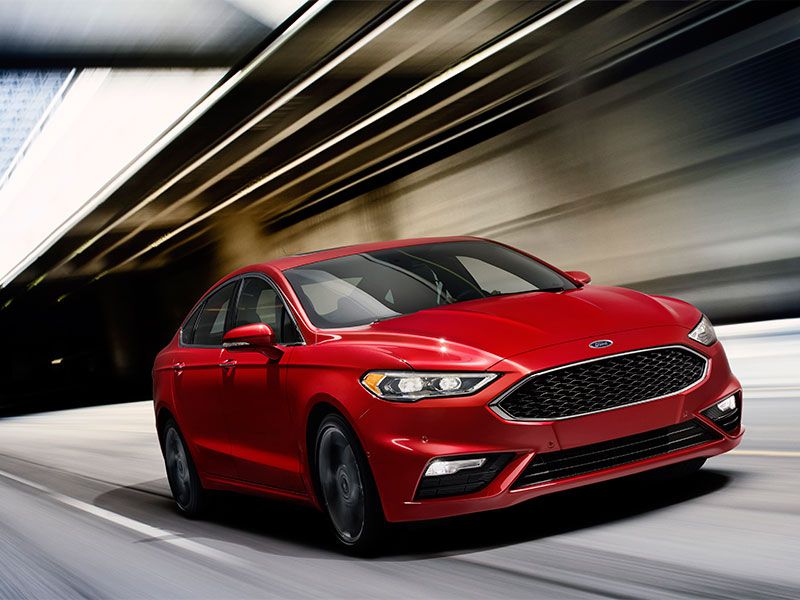
Photo by Ford
Interior
The Kia Optima has a more sophisticated interior design and more luxury features on the high-end trim level, while the Ford Fusion Titanium, Sport, and Platinum trim levels each feature distinctive leather upholstery. Heated front seats are optional in the Fusion SE and standard in the Fusion Titanium, Sport, and Platinum. Cooled front seats are standard in the Fusion Platinum and optional in the Titanium and Sport. Heated rear seats are not available in the Fusion.
Leather upholstery is standard in the Optima EX and SX (available with optional quilted Nappa leather). Heated front seats are standard in the Optima EX and SX. Ventilated front seats are optional in the Optima EX and standard in the SX. Heated rear seats are optional in the Optima SX.
Kia Optima
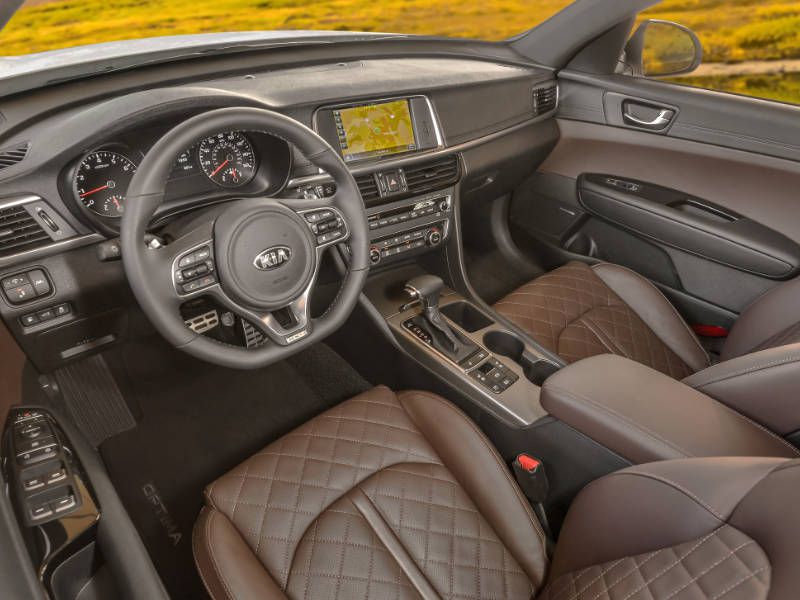
Photo by Kia
Cabin and Cargo Volume
Both sedans benefit from roomy interiors. Front seat dimensions are similar, with a slight edge for the Kia Optima, which provides 39.8 inches of headroom, 45.5 inches of legroom, 56.0 inches of hip room, and 58.1 inches of shoulder room. The Ford Fusion’s front seat allows 39.2 inches of headroom, 44.3 inches of legroom, 55.0 inches of hip room, and 57.8 inches of shoulder room.
Rear seat dimensions are close as well, but the Fusion wins on legroom. The Optima’s back seat provides 37.8 inches of headroom, 35.6 inches of legroom, 56.0 inches of hip room, and 56.4 inches of shoulder room. The Fusion’s back seat allows 37.8 inches of headroom, 38.3 inches of legroom, 54.4 inches of hip room, and 56.9 inches of shoulder room. The Fusion’s trunk provides 16 cubic feet of cargo space, squeaking by the Optima’s 15.9 cubic feet.
We're calling this one a toss-up with neither having a distinct edge over the other.

Photo by Kia
Infotainment
When it comes to standard infotainment, Ford falls short of Kia. All 2018 Kia Optima's are equipped with a seven-inch touchscreen UVO infotainment system, which includes Apple CarPlay and Android Auto support, along with a six-speaker audio system. An eight-inch screen is optional in the Optima EX and SX. The Optima EX and SX have an optional 10-speaker Harman/Kardon audio system. Apple CarPlay and Android Auto support are only provided in Ford Fusion's equipped with SYNC3, which is standard in the Titanium and Platinum, and optional in the SE and Sport. A twelve-speaker Sony audio system is standard in the Fusion Titanium and Platinum, as well as optional in the Sport.
Kia Optima
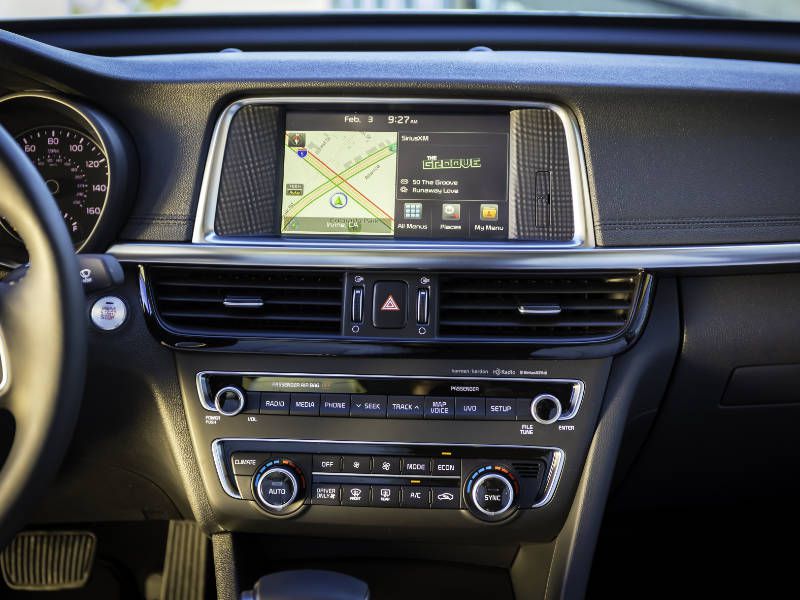
Photo by Kia
Safety
Both the Kia Optima and Ford Fusion are safety-oriented and offer a full array of modern technology (including adaptive cruise control and blindspot mirrors,) but you’ll need to add option packages or opt for the highest trim levels. The Insurance Institute for Highway Safety (IIHS) rates the 2018 Kia Optima a Top Safety Pick, while the Fusion fails to achieve that rating, primarily due to its headlights which do not meet the stringent IIHS criteria.
The Optima has the edge over the Fusion in this category, although both lag the class-leading Toyota Camry, Subaru Legacy, and Hyundai Sonata which earn the coveted IIHS Top Safety Pick+ award. The National Highway Transportation Safety Administration (NHTSA) gives the Optima five stars across the board, and although the Fusion rates five stars overall, it scores four stars in the front crash and rollover categories.
Kia Optima
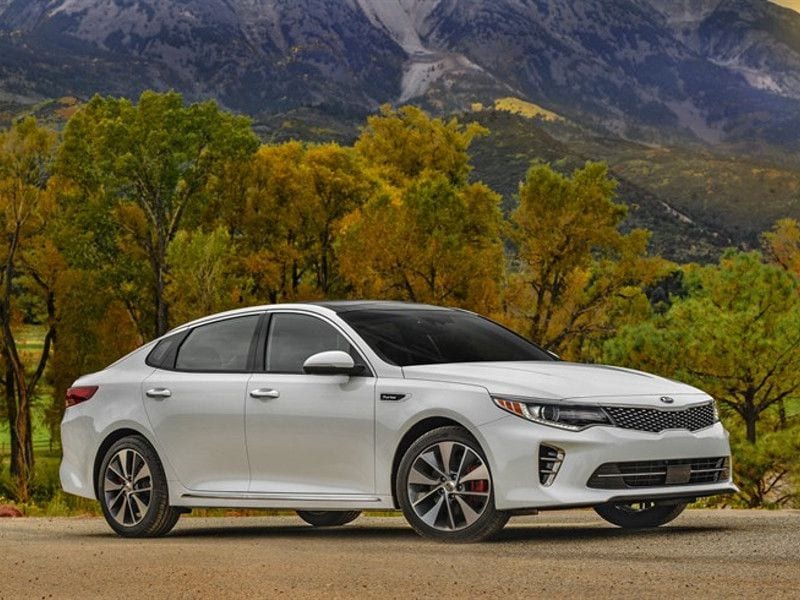
Photo by Kia
Drivetrain
The Kia Optima and Ford Fusion are both available with conventional, hybrid, and plug-in hybrid drivetrains. Both vehicles use front-wheel-drive platforms, but the performance-oriented Fusion Sport features all-wheel-drive. While most of the engines match up, the Fusion Sport takes things to the next level.
The Optima LX, S, and EX employ a naturally aspirated 2.4-liter inline four that produces 185 horsepower (HP) and 178 lb.-ft of torque. The Optima LX uses a turbocharged 1.6-liter for (178 HP/195 lb.-ft.,) and the range-topping SX is fitted with a turbocharged 2.0-liter four (245 HP/260 lb.-ft.)
The Fusion S and SE use a naturally aspirated 2.5-liter four-cylinder engine that produces 175 HP and 175 lb.-ft of torque. The Fusion Titanium and Platinum feature a 2.0-liter EcoBoost four that delivers 245 HP/275 lb.-ft. of torque. The Fusion Sport trumps all with a 2.7-liter EcoBoost four that cranks out 325 HP/380 lb.-ft. of torque.
Ford Fusion
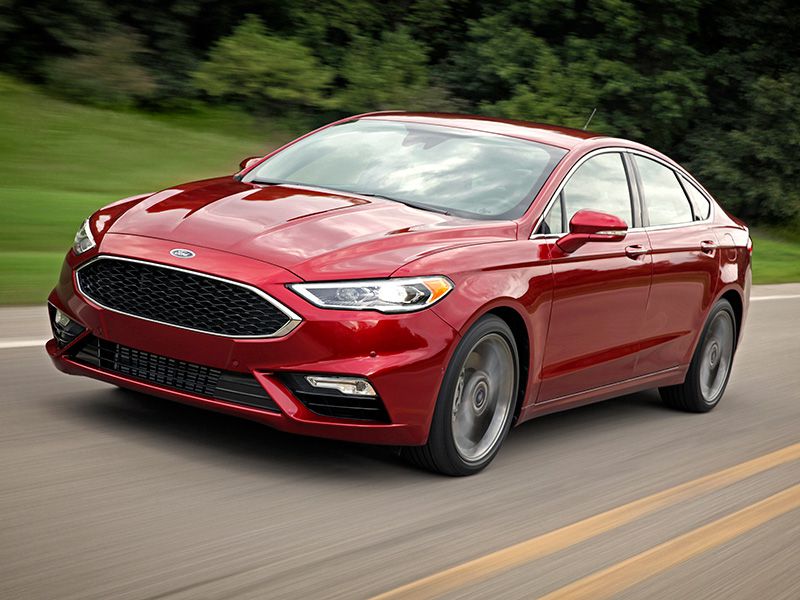
Photo by Ford
Fuel Efficiency
Both the Kia Optima and Ford Fusion deliver acceptable fuel economy when you choose the right power plants. The 1.6-liter turbo is the most fuel efficient of the Optima power plants, with an EPA rating of 28 city/37 highway/31 combined miles per gallon. The 1.5-liter EcoBoost four leads the pack for the Fusion, with 23/34/28 MPG. There's a notable difference in driving range as the Optima has an 18.5-gallon fuel tank, while the conventional Fusion models have a 16.5-gallon tank, except for the more thirsty Sport, which has an 18.0-gallon tank.
The hybrid versions of both vehicles deserve a shout out. The Optima Hybrid (39 city/46 highway/42 combined) and Fusion Hybrid (43/41/42) run neck and neck, with the Optima making a significantly better showing on the highway.
Advantage: Kia Optima
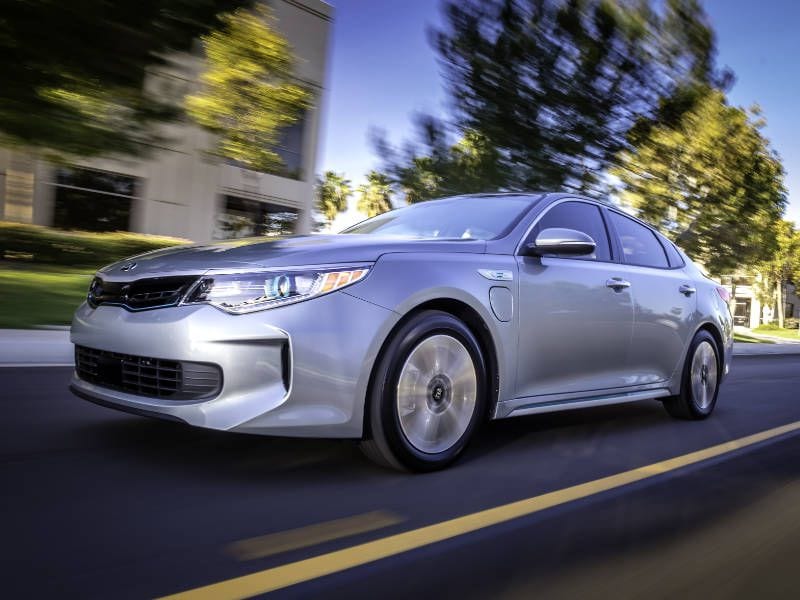
Photo by Kia
Ride and Handling
Ride and handling are a strong point for the Ford Fusion. It is smooth, composed, and stable across the range with good steering feel. The Fusion Sport features continuously controlled damping for added control. The Kia Optima is pleasant to drive but doesn’t match the Fusion’s solid steering feel, supple ride, and crispness.
Ford Fusion
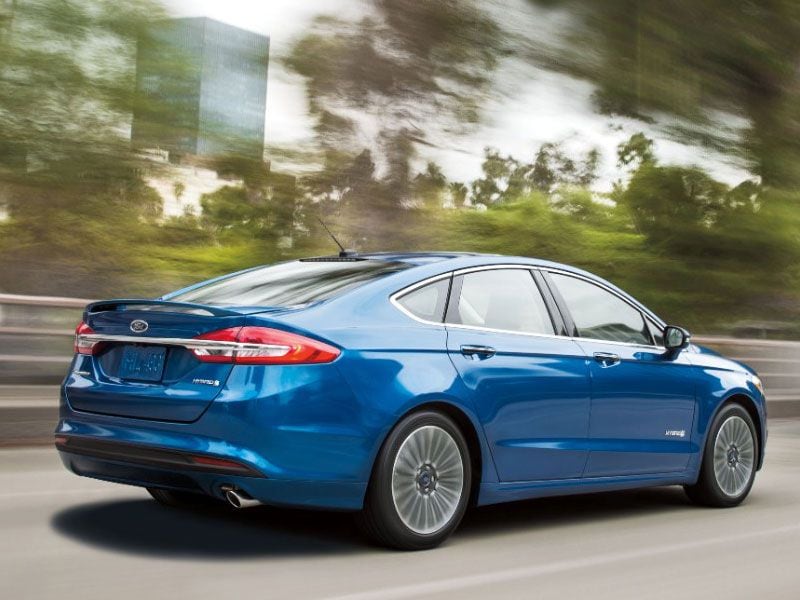
Photo by Ford
Warranty
There’s a significant difference between warranties on the Ford Fusion and Kia Optima. The Fusion features a 36 month/36,000 basic warranty, along with a 60 month/60,000-mile powertrain warranty. However, the Optima excels with a 60 month/60,000-mile basic warranty and a 120 month/100,000-mile powertrain warranty.
Kia Optima, by a considerable margin.
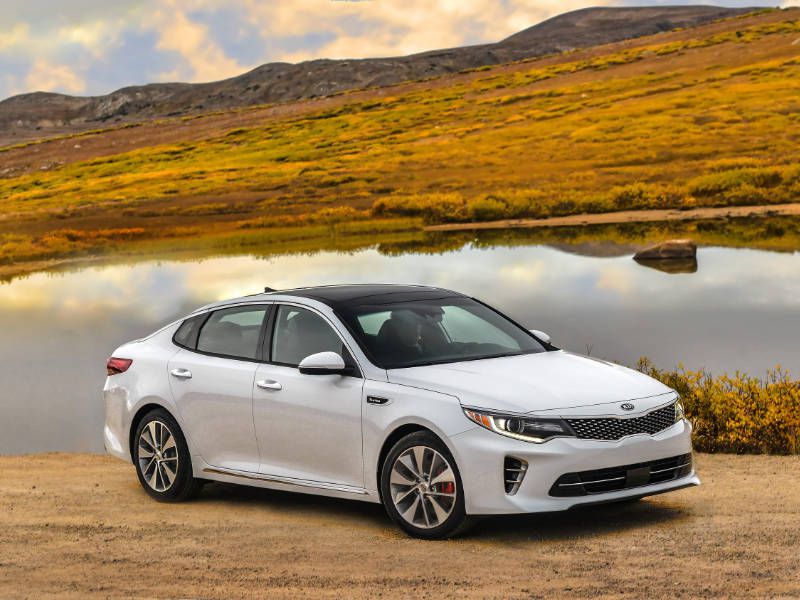
Photo by Kia
Value
Value is a tough call if you're in it for the short haul, as modern mid-size sedans suffer from steep depreciation in the near term. The Kia Optima and Ford Fusion trail the class-leading Honda Accord, Subaru Legacy, and Toyota Camry when it comes to holding their value. That said, Kia has made monumental strides in engineering and manufacturing of late, with the Optima winning accolades for its initial build quality. Combined with extensive warranties and aggressive pricing, the Optima gets the nod when you employ a buy and hold strategy.
Kia Optima
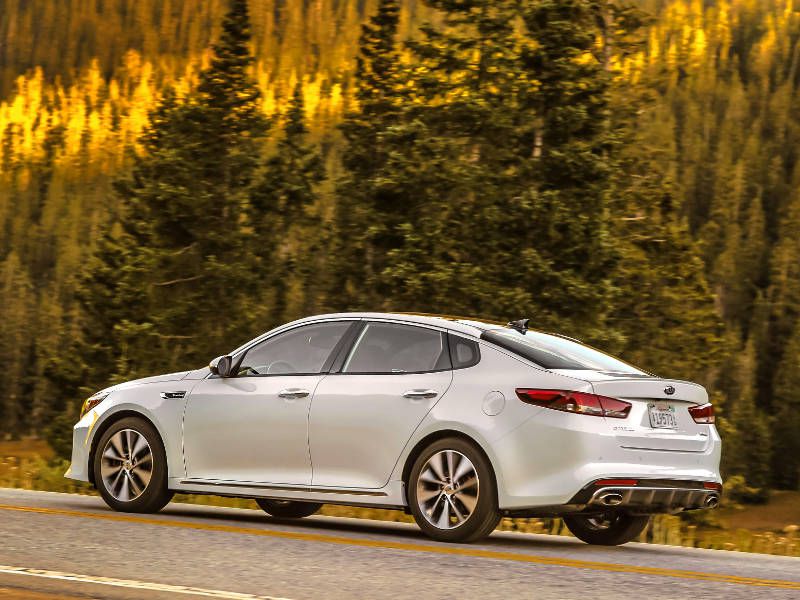
Photo by Kia